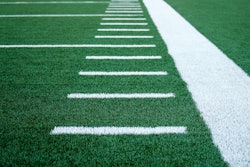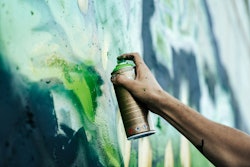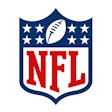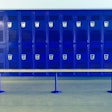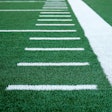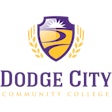Copyright 2017 Newsday, Inc.
Newsday (New York)
A phalanx of concrete barriers and new undercarriage bomb detection scanners have been added to the security measures at this year's U.S. Open in Queens, in addition to the hundreds of NYPD officers securing the annual event that officially began Monday, authorities said.
The department's Aviation Unit flew overhead and did a radiation scan of the entire footprint of the Billie Jean King National Tennis Center grounds, and assets from the FBI and FDNY hazmat units are also on the ground, said Lt. Tarik Sheppard, an NYPD spokesman.
"We really look at this as the number one target in the United States," Sheppard said. "From what I understand, there's no specific threat, but just the knowledge of this type of event, the amount of people, you have to consider it a target, no matter what."
That means, "hardening the target," Sheppard said, which includes increasing the number of concrete barriers to deter any would-be criminals.
The trend of vehicles used as weapons - recent terrorist attacks in Barcelona, France, and London have all used trucks to ram into crowds - has police reinforcing and expanding security perimeters at the Open, where keeping the hundreds of thousands of spectators safe is already a massive undertaking, authorities said.
The department's Counter Terrorism Division oversees security for the Open, with assistance from the Critical Response Command, which was formed after terrorist attacks in Paris in 2015, and other commands, such as the Emergency Services Unit.
Last year, the Open clocked 688,542 attendees over the two-and-a-half-week tournament, and more than 700,000 fans are expected to flood the event in 2018, when construction on the new Louis Armstrong Stadium is completed, said Chris Widmaier, a spokesman for the United States Tennis Association.
"We have one of the most sophisticated security operations in the world," Widmaier said. "This is a very secure location."
The USTA employs some 300 private security guards for the event, and its director of security, Mike Rodriguez, has extensive counterterrorism experience, Widmaier said.
But the event relies heavily on the expertise of the NYPD for security, which includes vehicle inspections and the scanning of all tickets, credentials and parking passes, he said.
Uniformed NYPD officers - some toting heavy weapons - join a security apparatus of more than 100 police surveillance cameras, license plate readers, radiation detectors, magnetometers and bomb-sniffing K-9s, Sheppard said.
"We test the dogs constantly," he said. "They've been hitting on every one - 100 percent, no failures."
Mitchell Rubiano, 23, of Glen Rock, New Jersey, said he was attending something like his eighth Open as he stood in a massive line to enter the grounds Monday morning.
"I feel safer with the guns and whatnot," he said.
Others bemoaned the long lines to gain entrance on opening day.
Kevin Herman, a radiologist from Teaneck, New Jersey, said he waited in line for 58 minutes with his three children. He said security seemed adequate, but there was a general sense of disorder, with staffers not telling people where to go.
"You hear the crowd noise and you want to be there and you can't," said Herman.
Widmaier said opening day can often be chaotic as fans discover or relearn the rules.
"Will people sometimes complain if they feel inconvenienced on the way in? Sure, what we want to do is come up with the most efficient model with the least inconvenience," he said. "That said, once they're on the grounds, they're very happy we have as robust a security plan as we have."
Read More of Today's AB Headlines
Subscribe to Our Daily E-Newsletter
Terms and Conditions Privacy Policy

















